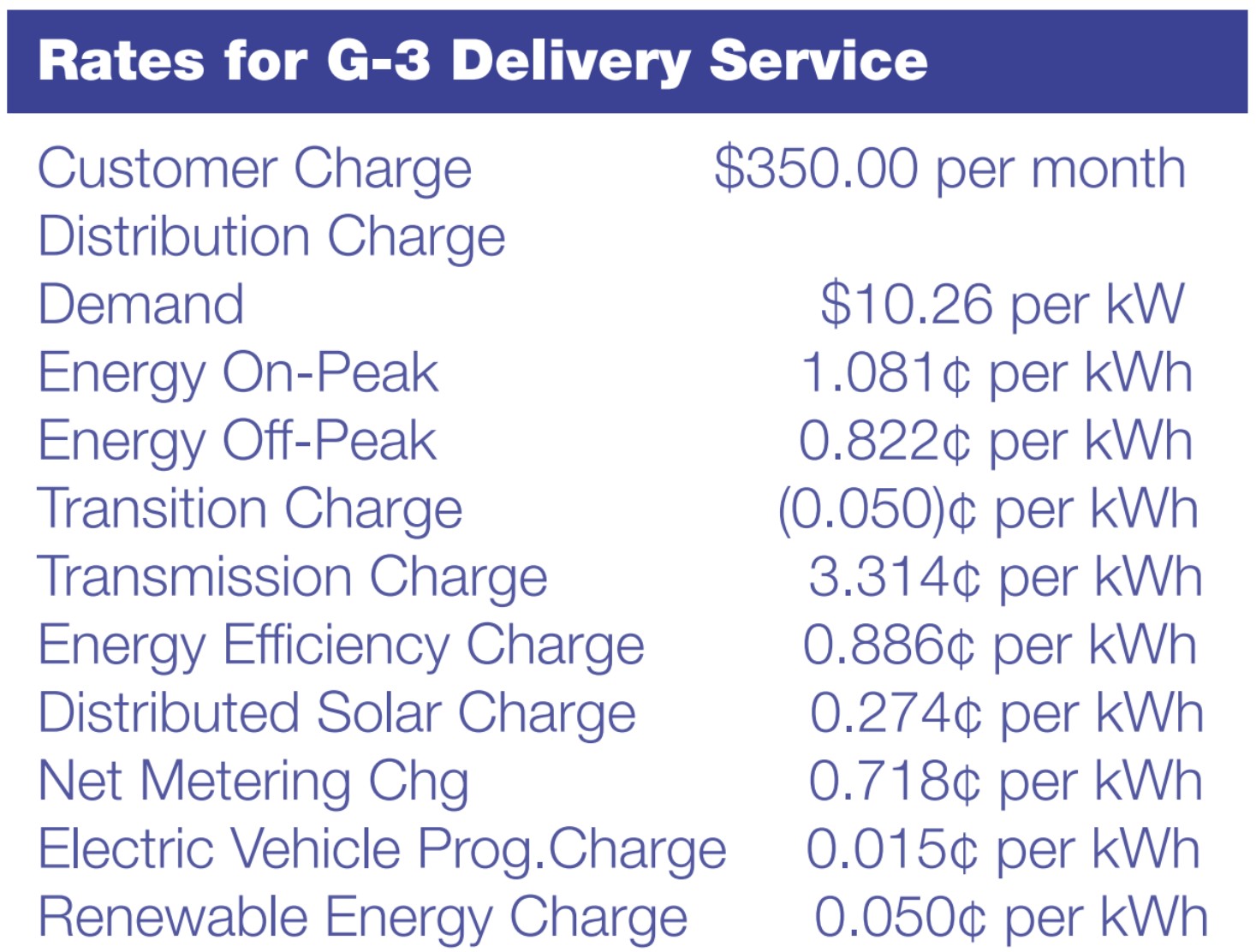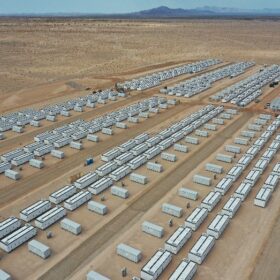The Massachusetts Department of Public Utilities (DPU) has approved a rate change that enables large electricity customers to switch their billing structure, aiming to incentivize energy storage installations. As of April, National Grid’s large commercial and industrial customers classified as G-3 can opt to have their transmission charges calculated based on kilowatts (kW) rather than kilowatt-hours (kWh) as outlined in D.P.U. 23-150.
G-3 customers are large business customers with a 12-month average monthly demand of at least 200 kW for three consecutive months. This rate class is designed for high-energy users and includes special conditions, such as different rates for peak and off-peak hours. As shown in the rate class chart below, large users pay a significantly lower rate for “energy,” which traditionally refers to the electricity rate, compared to their “transmission” charge.

Shifting transmission charges to a demand-based structure, measured in $/kW, allows energy storage systems to mitigate these costs, enhancing their financial viability and return on investment.
Austin Dawson, Deputy Director of Energy Policy at the Massachusetts Department of Energy Resources (DOER), highlighted the benefits of the new rate structure in a LinkedIn post:
Under transmission coincident demand charges, G3 customers have the opportunity to save money on their electric bills by lowering peak demand coincident with system peak, which will lower National Grid’s share of Regional Network Service (RNS) costs in addition to contributing to the deferral or avoidance of future transmission investments.
The RNS fee is determined by the total electricity demand of National Grid customers in Massachusetts at peak times. National Grid pays the New England Independent System Operator (ISO-NE) to ensure adequate electricity supply during high-demand periods. By deploying a network of batteries at points of high energy demand and using them to reduce peak loads, overall system efficiency improves, and reliance on infrequently used resources decreases.
Dawson noted that although G-3 customers represent less than 1% of National Grid’s customer base, they account for 27% of coincident peak demand.
Jeffrey Glassman, owner of logistics and warehouse company “Darn It!” in New Bedford, has installed five solar power projects on his buildings, including two behind-the-meter systems. “Since installing solar, we’ve mostly offset our electricity use,” Glassman said. “However, newer net metering rules and demand charges leave us with some unavoidable costs, which is why we’re considering batteries.”
New England has been integrating battery storage for peak shaving since at least 2018. Combined with the growth of small-scale solar, leading to the emergence of the “duck curve,” these developments have contributed to the declining viability of fossil fuel generation in the region. This trend has resulted in New England’s last coal plant losing out on capacity payments and the scheduled closure of the Mystic Gas Generation facility.
The U.S. Department of Energy’s Lawrence Berkeley National Laboratory, several years ago, modeled that demand charges greater than $15/kW would generate energy storage returns on investment that would drive installations.
This content is protected by copyright and may not be reused. If you want to cooperate with us and would like to reuse some of our content, please contact: editors@pv-magazine.com.








By submitting this form you agree to pv magazine using your data for the purposes of publishing your comment.
Your personal data will only be disclosed or otherwise transmitted to third parties for the purposes of spam filtering or if this is necessary for technical maintenance of the website. Any other transfer to third parties will not take place unless this is justified on the basis of applicable data protection regulations or if pv magazine is legally obliged to do so.
You may revoke this consent at any time with effect for the future, in which case your personal data will be deleted immediately. Otherwise, your data will be deleted if pv magazine has processed your request or the purpose of data storage is fulfilled.
Further information on data privacy can be found in our Data Protection Policy.